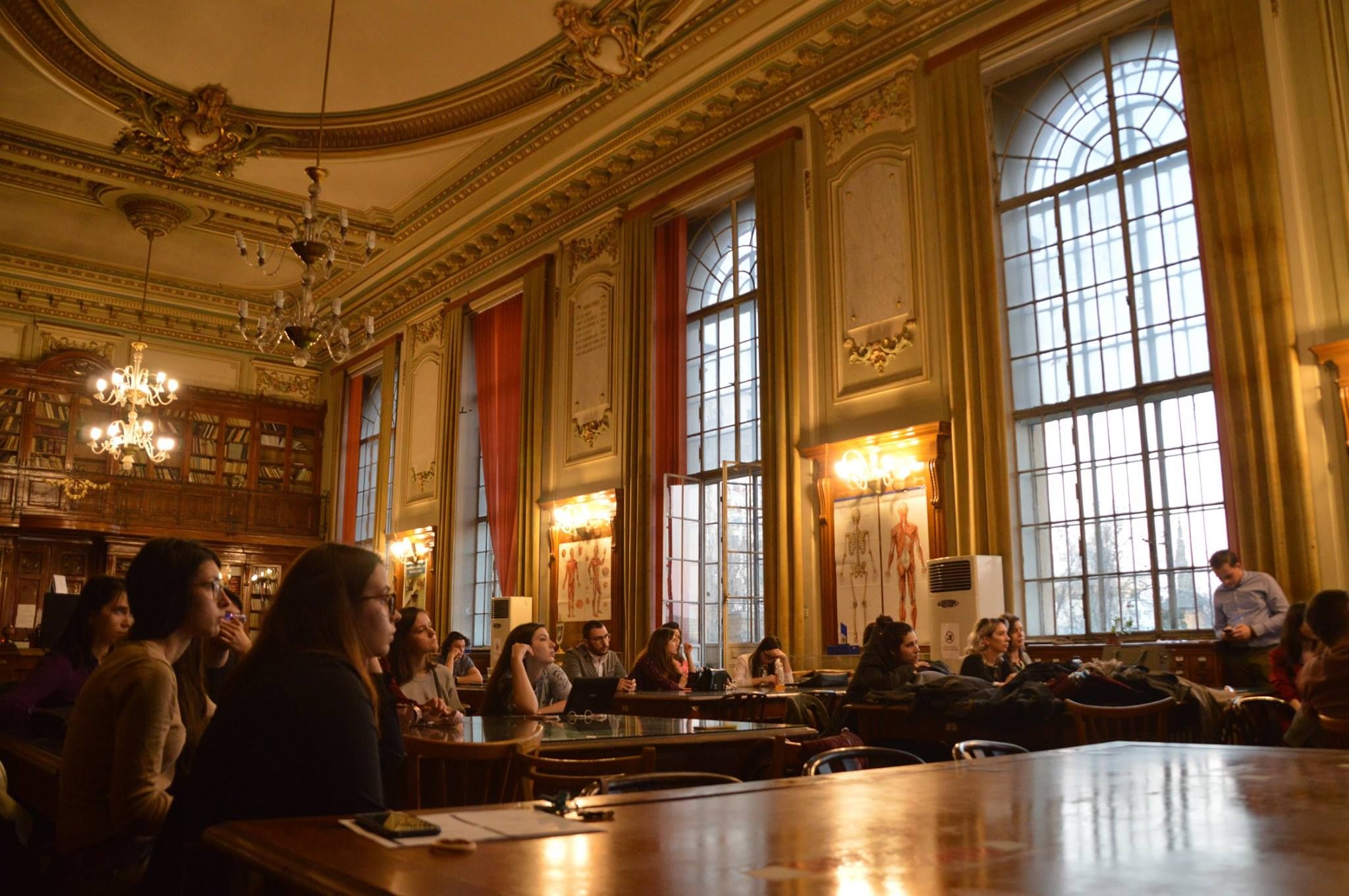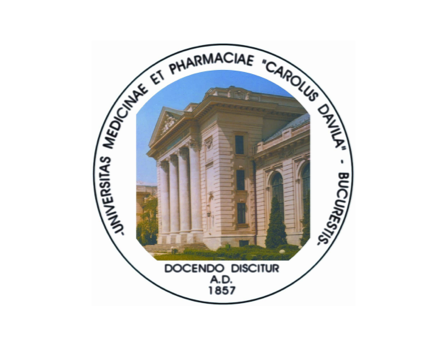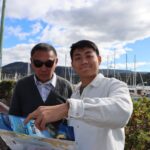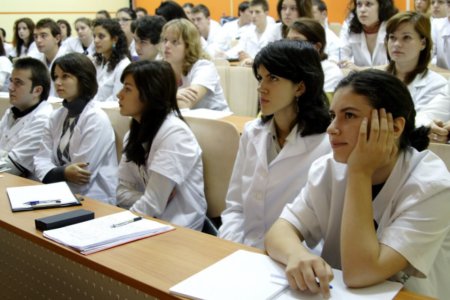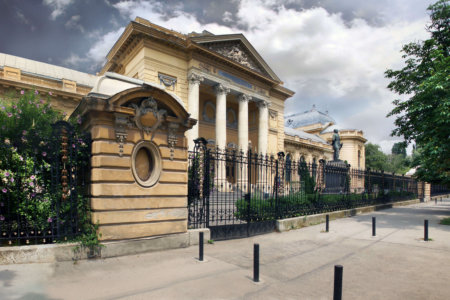Born and raised in Romania, Miruna Apetroaei has always had a knack for chemistry, which naturally evolved into an interest in pharmacy. When the time came to select a university, only one option made the most sense: the Carol Davila University of Medicine and Pharmacy.
“On careful inspection, I noticed it offers students a wide range of programme options — all of which I’ve heard can make finding work after graduation all the easier,” she says. “After five years here, I am confident in saying I made the best decision for my career.”
Miruna’s favourite lessons are those in Physical Chemistry, and General Pharmacology and Clinical Pharmacy, a course she describes as “more abstract,” enabling her and her peers to explore Mathematics, Chemistry and Physics to truly understand how the world works. She found Pharmacology lessons equally enriching. These sessions entailed more interaction with patients.
Răzvan Papacocea from Bucharest, a fifth-year medicine student, thoroughly enjoys the practical side of a Carol Davila education as well. “Many classes were memorable,” he says. “In anatomy, we studied real human corpses and in histology we discovered the cells that make up the human body, while in microbiology we explored the microscopic world of bacteria. I also enjoyed semiology, the subject that uncovered all the different types of signs and symptoms. I can’t decide on a favourite!”
Practice-focused learning of this sort is common at Carol Davila, thanks to its Faculty of Pharmacy, Faculty of Midwifery and Nursing, Faculty of Medicine, and Faculty of Dental Medicine. Experiential elements can be found across every subject offered by these divisions — and there are plenty.
The Faculty of Medicine offers 127 subjects that span paediatrics, general surgery, cardiothoracic pathology, plastic surgery, gynaecology, orthopaedics, radiology, medical semiology, infections diseases, virology, epidemiology, and much more. The Faculty of Dental Medicine is just as impressive, offering a total of 45 subjects geared towards breeding a new generation of experts through a six-year bachelor’s degree.
While similar topics are covered at medical schools across the globe, experience is what keeps Carol Davila a cut above the rest. These faculties are considered to be some of Romania’s most historic (the Faculty of Medicine was established in 1867).
Hence, their ability to consistently rank highly nationally and globally, accumulate prestige along the way and attract large cohorts of diverse, ambitious students — all of whom are never short of excitement outside of classrooms. All credit goes to robust student organisations that are just as educational as they are enriching.
For example, the Medical Students’ Society of Bucharest (SSMB) was formed to encourage fruitful interaction between students. It provides them with a safe space to support each other, exchange ideas in an organised manner, and most importantly, relish in Romanian medical literature. The association also hosts a broad array of projects such as blood donation drives, medical research sessions, reproductive health campaigns, scientific presentations and human-rights oriented projects.
“Joining the SSMB was not only memorable, but life-changing as well,” says Răzvan. “I cannot imagine how I would have progressed without the family I made there and everything I learned from them. The experiences are plenty and varying. We explored students’ rights and representations; we taught reproductive health and general health lessons to high school students, studied in hospitals across the globe, organised congresses, negotiated with CEOs for sponsorships, and met up with members of our government to discuss making changes for the greater good.”
Meanwhile, the Dental Medicine Students’ League in Bucharest sparks powerful conversations by defending the rights and interests of the students from the Faculty of Dentistry, regardless of sex, religion, nationality or political affiliation. While uplifting, they inspire. The league hosts numerous projects such as information campaigns and selective waste management initiatives. 3D printing is big here too — as it is across campus.
The 3D Printing Laboratory is a prime example of Carol Davila’s commitment to innovation and creativity. Its main objective is the cultivation of medical innovation among students and medical staff by implementing, encouraging and supporting the use of 3D printing in the medical academic process used for current medical practice and future medical research.
Such offerings are typical of universities impactful enough to produce world-renowned scientists and Nobel Prize winners like G. Emil Palade. To begin your journey to achieving similar outcomes in the ever-so-topical medical world, click here to learn more about the University of Medicine and Pharmacy Carol Davila.
Follow the Carol Davila University of Medicine and Pharmacy on Facebook, YouTube and LinkedIn

